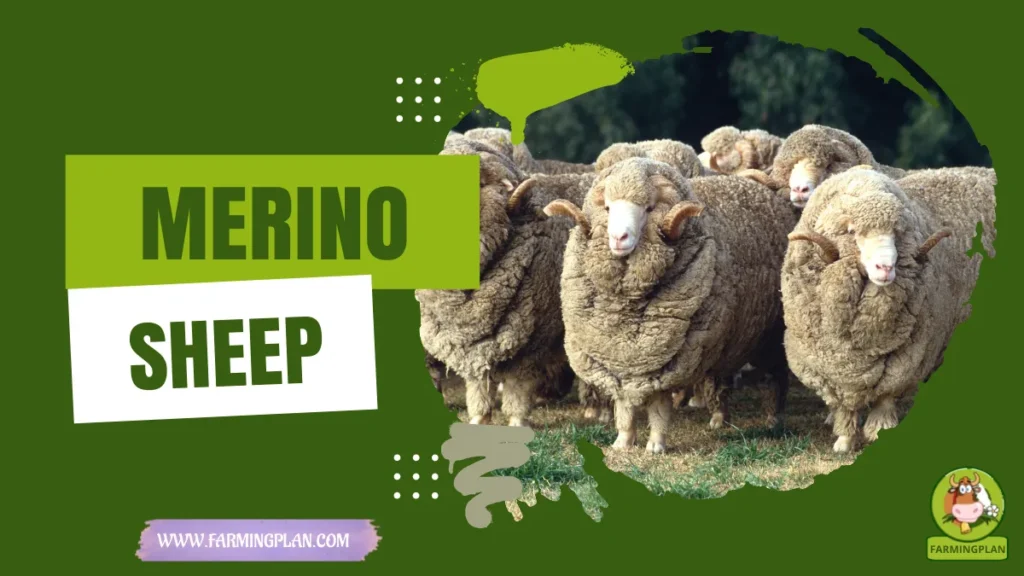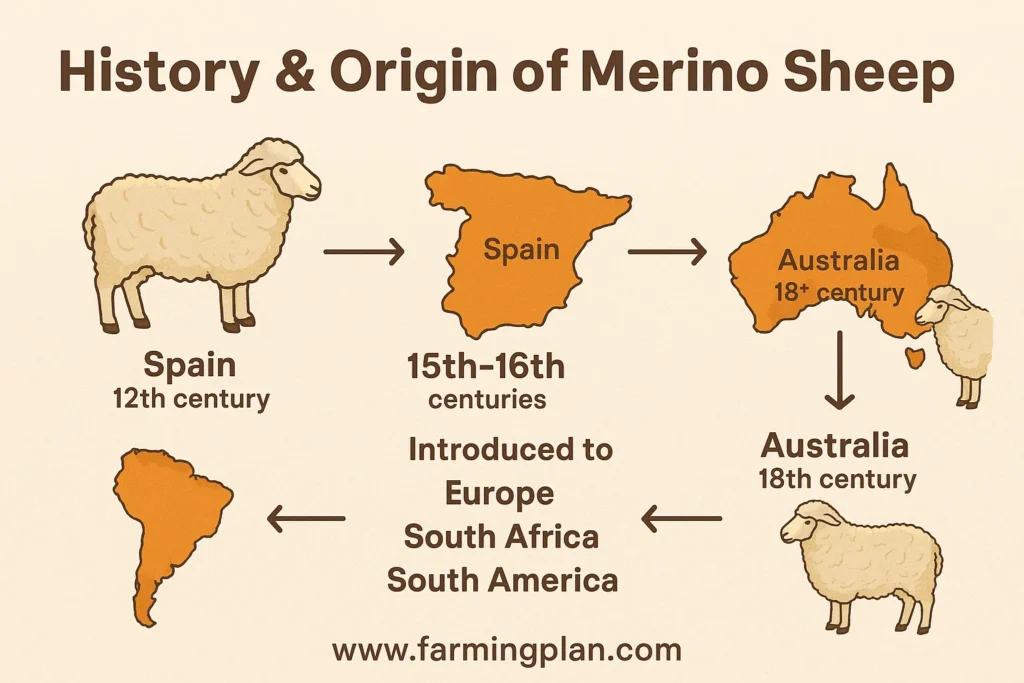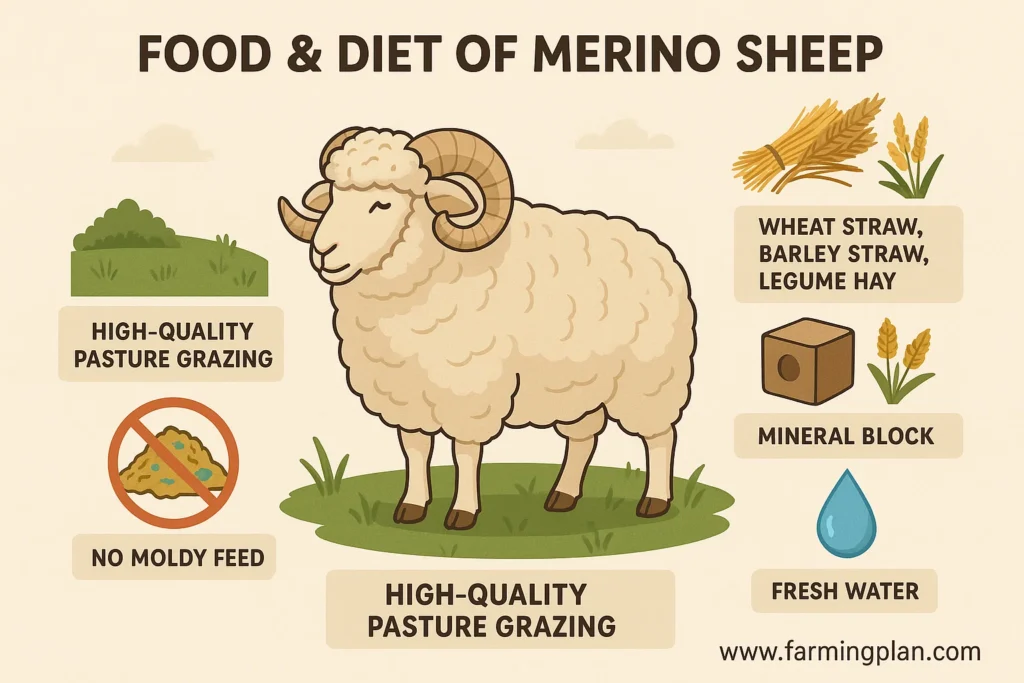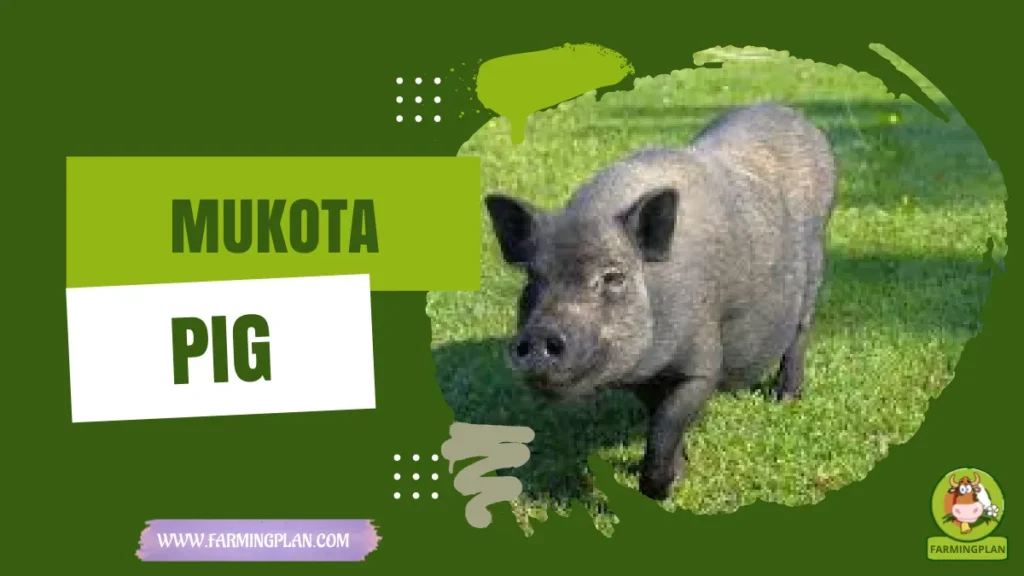When I first got into sheep farming, I quickly learned that Merino Sheep are in a league of their own. Known worldwide for their incredibly soft, fine wool, these sheep have a rich history and practical value that stretches far beyond just fiber. If you’re a farmer, breeder, hobbyist, or even just someone curious about livestock, the Merino is worth knowing. In this article, I’ll walk you through everything you need to know—from the breed’s origin and characteristics to feeding, health care, and expert tips based on real-life experience. Whether you’re interested in merino wool sheep or merino rams for sale or want to learn what makes merino lambs so special, you’re in the right place.

History & Origin of Merino Sheep
Let’s take a journey back in time. The roots of Merino Sheep can be traced back to Spain, dating as far back as the 12th century. Their wool was so highly prized during the 15th and 16th centuries that Spain maintained strict control over the export of the breed, a testament to their historical significance. The journey of the Merino breed didn’t stop in Spain.

In the 18th century, Merinos were introduced to other parts of Europe like France and later to South Africa and South America. Their adaptability to different climates and farming goals has made them a global success, with Australia, particularly South Australia, becoming a hub for Merino breeding thanks to large-scale selective breeding programs.
Their history isn’t just fascinating—it’s foundational. These sheep weren’t just raised for wool; they were symbols of prestige and a big part of international trade. Today, they’re known worldwide for their fine-wool quality, with ongoing breeding efforts still improving fiber diameter and carcass quality.
Read More: Chamois Coloured Goat: Smart, Hardy, And Full Of Charm
Characteristics of Merino Sheep
When you first lay eyes on a Merino, you’ll notice their medium size. Rams typically weigh between 80–105 kg, while ewes fall in the 50–80 kg range. But it’s not about size—it’s about wool. Their fleece is dense, crimped, and covers most of their body—even parts of the face and legs in some varieties. The fiber diameter ranges from 11.5 to 24 microns, which is incredibly fine compared to other breeds. This makes Spanish merino wool ideal for soft, luxurious garments.
There are several types: the Australian Merino, South African Merino, and Delaine Merino, each adapted for different climates and farming goals. Some are dual-purpose, offering meat and wool, while others are purely fine-wool sheep. Their ability to produce high moisture content wool with excellent uronic acid and ferulic acid content makes them even more valuable for commercial wool production.
Nature/Temperament of Merino Sheep
In my experience, Merino Sheep are gentle and easy-going. They’re not aggressive, and their docile nature makes them a great choice for beginner farmers or even hobbyists. They thrive in groups and tend to be social animals. You’ll often find them sticking together, grazing peacefully. Their calm temperament also means they’re easier to handle during shearing or veterinary checkups.
That said, Merinos can be a bit more sensitive to environmental stress compared to other coarse wool breeds, especially in wet climates due to their dense fleece. But with proper shelter and care, they adjust well. If you’re looking for a sheep breed that won’t give you a headache and will reward you with quality wool, Merinos are your go-to.
Food & Diet of Merino Sheep
Feeding Merino Sheep doesn’t have to be complicated, but it does require some strategy. Their diet directly affects wool growth, so what they eat matters. Start with high-quality pasture grazing—that’s their favorite. Supplement with wheat straw, barley straws, and legume hays during drier months. Avoid moldy feed as it can cause digestive problems.

I also provide a mineral block to support wool and protein content. Merinos benefit from inulin-rich plants and grains that help with dietary fibers and digestion. Fresh water is a must—clean and always available. Avoid overfeeding grains; too much can lead to bloat or excessive fat, which lowers carcass quality. Keep it balanced, and your Merino’s wool and health will both thrive.
Usage/Purpose
When most people think of Merino Sheep, they think of wool. And rightly so—their fine, soft fleece is world-famous. It’s used in everything from luxury fashion to activewear, thanks to its breathability, moisture-wicking, and anti-bacterial properties. This high-quality wool not only fetches a good price in the market but also has a wide range of applications, making it a profitable venture for farmers.
But Merinos aren’t just about fleece. In some regions, especially South America and South Africa, farmers also raise them for meat. Their medium-sized carcass is known for good flavor and tenderness. Their mild nature and manageable size also make them popular for educational farms, hobby farms, and even 4-H projects.
Special Features
There’s a lot to love about this breed. Here are a few things that make Merino Sheep stand out:
- Superfine Wool: The softest wool on the market—ideal for clothing worn close to skin.
- Greasy Wool Yield: They produce more greasy wool per animal than many breeds.
- Climate Adaptability: Despite their Spanish roots, they thrive in varied climates with proper care.
- Efficient Feeders: Merinos convert feed into wool more efficiently than most sheep.
- Selective Breeding Success: Breeding programs have enhanced the fiber consistency and protein content of wool.
They’re basically nature’s premium wool factory—with a calm personality to match!
Read More: Abacot Ranger Duck: Resilient Beauty for Every Farm
Health Issues & Prevention of Merino Sheep
Every breed has its issues, and Merino Sheep are no exception. Their dense fleece can lead to overheating or skin infections if not managed well.

Common problems include:
- Flystrike: Caused by blowflies laying eggs in moist fleece.
- Footrot: Especially in wet pastures.
- Parasites: Internal and external parasites love thick wool.
To prevent these, I keep my flock’s living area clean and dry. Shearing regularly (once a year minimum), trimming hooves, and using preventive antiparasitic treatments work wonders. Also, proper nutrition helps improve immune strength, keeping diseases at bay. Always work closely with a vet and have a vaccination schedule in place.
“Merino Sheep Don’t Just Grow Wool—They Grow Opportunities.”
Step-by-Step Farming Guide
Step 1: Prepare Your Shelter & Fencing
Merinos need dry, ventilated shelters to avoid fleece rot and hoof issues. I built mine with raised flooring and slanted roofing. Use mesh or electric fencing to protect from predators. Keep straw bedding fresh and moisture-free.
Step 2: Build A Feeding & Watering Routine
Free-range grazing is best but always have hay, grains, and mineral blocks ready. I feed my flock twice daily and clean waterers daily. Adjust portions based on age, season, and health condition.
Step 3: Shearing & Grooming For Wool Health
Shear Merinos at least once a year—spring is ideal. I use professional shearers, but if you DIY, invest in quality clippers. Regular grooming helps reduce matting and parasite risk.
Step 4: Monitor Health & Schedule Vet Checks
Always be observant. If a sheep limps, eats less, or isolates itself—something’s wrong. I schedule vet visits quarterly and deworm my flock as recommended.
Step 5: Breeding Season Planning
Select strong, high-wool-producing merino rams and healthy merino ewes. I allow natural mating during cooler months and monitor merino lamb births closely. Keep newborns warm and tag for recordkeeping.
Expert Tips & Best Practices
- Rotate Pasture: Prevent overgrazing and parasite buildup.
- Keep Shearing Records: Track wool weight and quality over years.
- Feed Seasonal: Use high-protein grains in winter, pasture in spring.
- Track Breeding Lines: Select ewes and rams with top wool genetics.
- Inspect Weekly: Ears, hooves, eyes—catch small issues early.
FAQs
Are Merino Sheep hard to raise?
Not at all! They’re calm and adapt well. Just keep their fleece in check and feed properly.
How often should I shear a Merino Sheep?
At least once a year, usually in spring. Some people shear twice for cleaner fleece.
Can Merino Sheep be raised for meat?
Yes, though primarily wool producers, they offer decent carcass quality too.
How much wool does one Merino produce?
Typically 4–10 kg annually, depending on age, diet, and breed type.
Do Merino Sheep need special food?
Not special, but high-quality pasture, hay, and mineral blocks help boost wool growth.
Conclusion
Merino Sheep are more than just wool producers—they’re a blend of history, quality, and gentle nature. Whether you’re in it for their world-renowned fleece or exploring dual-purpose benefits, Merinos are a smart choice for any level farmer. With proper care, the right diet, and a bit of attention, these sheep will reward you season after season. So if you’re considering raising sheep, I highly recommend starting with a Merino flock. Ready to begin your wool journey? Jump in, and you’ll thank yourself later!


